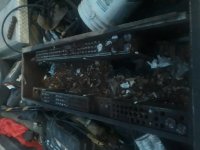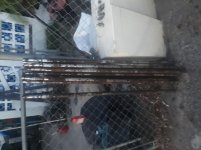shanemward
Plastic
- Joined
- Dec 13, 2020
- Location
- Barbados, West Indies





I found what is supposed to be a bore gauge in an old retired machinists tool room, he worked on project HARP under Gerald Bull, i hope you can see the pictures i attached but it has "U.S Navy bu. of ord. , FLEET STAR GAGE MK.8 MOD 1 "stamped on it serial number 280 , looks like its made by a company called KOBE INC.
id love to know where i could find diagrams of it to see what parts i seem to be missing and hopefully find those parts.
Shane W.


